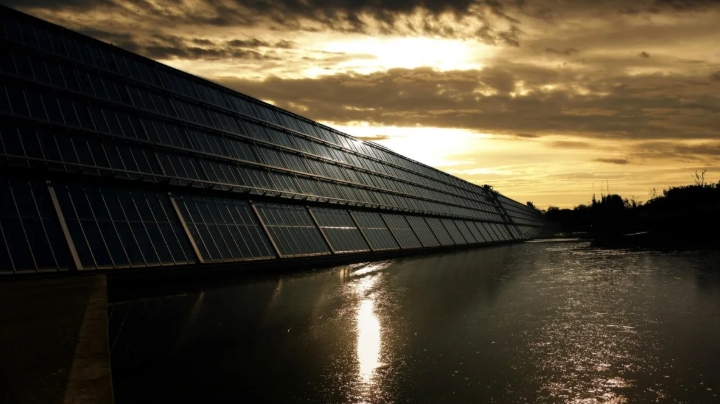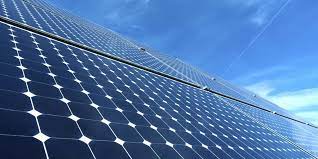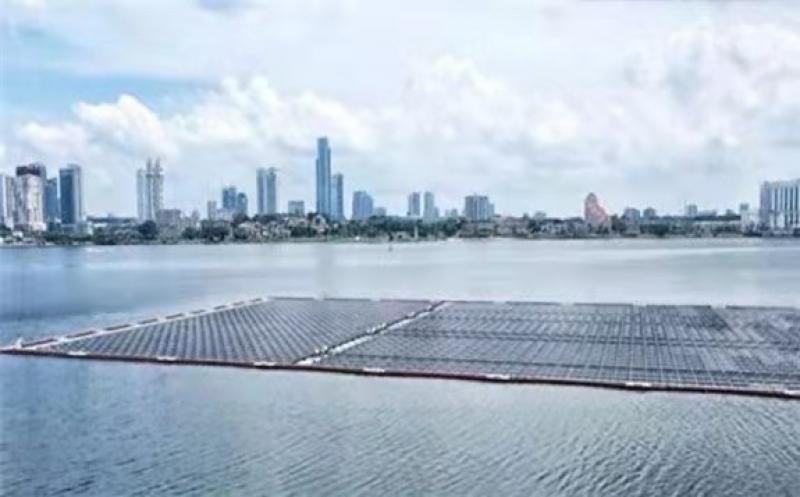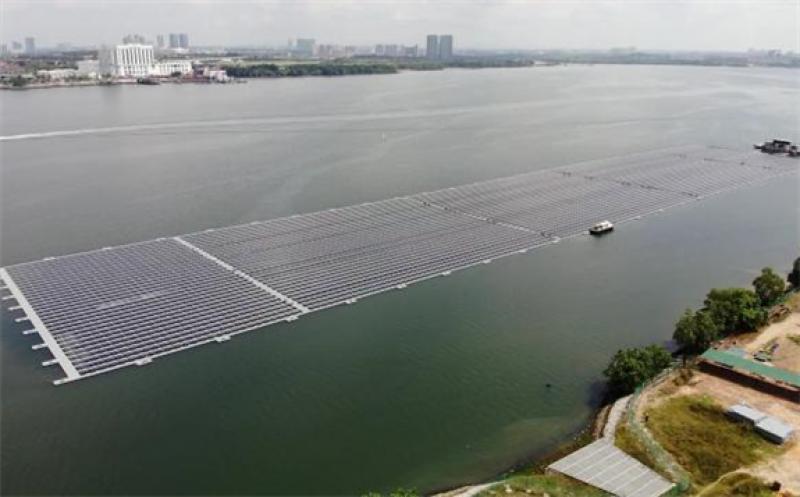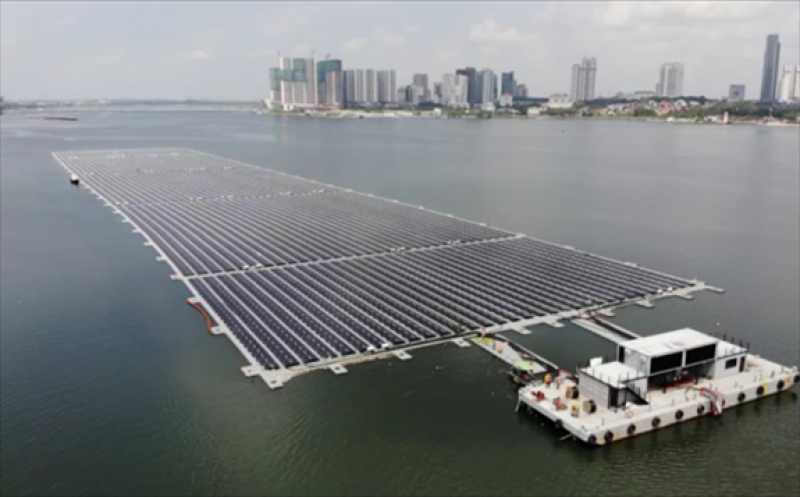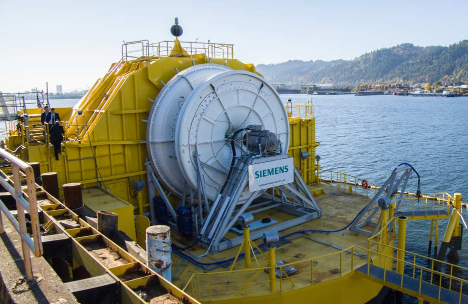 Ocean Energy's buoy would be one of many such devices on a utility-scale wave farm.
Ocean Energy's buoy would be one of many such devices on a utility-scale wave farm.
Ocean waves are powerful and perpetually replenished. But unlike the wind and sun, waves remain a largely untapped source of renewable energy, despite their enormous potential. A slew of projects is starting to change that, with large prototypes launching near coastlines worldwide.
In Hawaii, the OceanEnergy Buoy is slated to connect to the island of Oahu’s electric grid next month. The 749-metric-ton device was recently towed from Portland, Ore., to the U.S. Navy’s Wave Energy Test Site, where the bright yellow buoy will undergo a year of performance tests. The project builds on a decade of research and several smaller iterations, including a quarter-scale model that was tested for three years in Ireland’s Galway Bay.
“The difficulty has been in developing a technology that actually survives in the marine environment, which can be very harsh,” said John McCarthy, CEO of the Irish buoy maker OceanEnergy.
To limit seawater effects, McCarthy’s team designed a device that puts mechanical parts above the surface. The “oscillating water column” system features a semi-submerged chamber, inside of which an air pocket is trapped above a column of water. When waves crest and water enters the chamber, it forces the air upward, spinning a Siemens subsidiary’s turbine system to generate electricity. As water recedes, it creates a vacuum that sucks in outside air and continues driving the turbine.
The 1.25-megawatt buoy will be moored to a 60-meter-deep berth and should withstand gale-force winds and extreme waves. A subsea cable will link it to Hawaiian Electric’s grid, which still runs primarily on imported oil.
About 100 people built the buoy over 14 months at the Swan Island shipyard in Portland, said Tom Hickman of U.S. shipbuilder Vigor Industrial. Workers cut, formed, and welded steel plates into three massive sections to form the L-shaped hull, then installed mechanical and electrical components. On a crisp October morning, company leaders and dignitaries held a completion ceremony, days before a tugboat dragged the buoy up the Columbia River and across the Pacific Ocean.
Tyler Gaunt, a project manager for Vigor, said he was proud to have successfully finished the project but happy to see the device leave. Constructing a first-of-its-kind prototype at a large scale meant constantly solving problems under a relatively tight deadline. For instance, the supportive steel “stiffeners” that are typically applied inside ship hulls went on the buoy’s exterior, to avoid creating drag within the air chamber.
“It was essentially the opposite of how we would normally construct a ship,” he said from the shipyard.
Globally, about 19 megawatts of “wave energy converters” were deployed from 2010 to 2018, though some devices were decommissioned after pilot tests, according to Ocean Energy Europe [PDF] (an industry organization not connected with OceanEnergy). The bulk of projects have been in the United Kingdom and Western Europe, with other devices deployed in China, Australia, New Zealand, and the United States.
Wave energy is one of several technologies that harness the ocean’s natural features—tides, winds, water temperatures, salinity—and could provide significant amounts of clean electricity. Waves off U.S. shores represent some 2.64 trillion kilowatt-hours in theoretical annual energy potential—equivalent to about two-thirds of the nation’s electricity generation in 2018, according to an estimate by the U.S. Department of Energy. This resource is abundant at higher latitudes, where colder temperatures and weak sunlight make it harder to operate other renewables during certain months.
“Wind and solar are really cheap and ubiquitous on land, but there are challenges with those technologies,” said Bryson Robertson, codirector of the Pacific Marine Energy Center and an Oregon State University associate professor. “In places with very aggressive decarbonization agendas, we’re going to need all renewable resources to really start to mitigate our impact on the climate.”
Marine technologies still face significant hurdles to achieving commercial scale. It’s not yet clear how spinning turbines and rotating blades will affect wildlife. Supporting infrastructure, such as offshore grid connections, isn’t widely available. Licensing and permitting processes must first ensure that devices don’t obstruct commercial fishing, whale watching, or other activities.
Such issues have stifled investment, so public agencies and research institutions are leading the way, with over a dozen testing hubs worldwide. In Scotland’s Orkney Islands, the European Marine Energy Center has 13 grid-connected berths for wave and tidal devices. New sites are under way in Western Australia and Jeju Island, South Korea. At the U.S. Navy hub in Hawaii, three other developers—Columbia Power Technologies, Northwest Energy Innovations, and Oscilla Power—are also expected to test wave energy converters starting in 2021.
Robertson said OceanEnergy’s yellow buoy represents a valuable “data point” in the broader effort to improve performance and drastically reduce electricity costs from marine technologies. “We need to start putting these devices in the water so we can start to learn lessons,” he said.
This article appears in the December 2019 print issue as “ At Last, Wave Energy Tech Plugs Into the Grid.”
